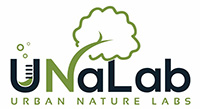 |
Inspiration Card
Governance Actions |
|
|
|
G32 Quantitative and qualitative assessment tools and standards
Quantitative and qualitative assessment tools and standards can be useful instruments to foster social inclusion of NBS. On one hand, specific tools can help to find out about the status quo of social inclusion, the distribution of NBS and the quality of already integrated NBS, on the other hand they can help to foster a more inclusive urban development by showing for example which areas are in the greatestneed of NBS and by integrating certain standards for green space accessibility.
Accessibility Standards: To foster an equal distribution of high-quality and safe green infrastructure cities need to make it binding that green urban space is accessible within a certain range. Thiscan ensure that all residents are able tobenefit from the positive effects of NBS. Many cities are experienced with the use of per-capita threshold recommendations or range values. Berlin,for example,recommends that every resident should have access to at least 0.5 ha of green space within 500m. The city of Berlin also aims to provide 6m² of urban green space per inhabitant as a per-capita threshold, whereas Leipzig recommends 10m² of urban green space per inhabitant. Focusing on per-capita threshold can be ineffective in some cases: areas with very dense population can show a relatively low per-capita value even though sufficient green space may already exist. Range values,on the other hand,oftentimes only cover the linear distance, not taking into account the actual walking distanceor other potential barriers, which is ofparticularimportance for vulnerablegroups includingthe elderly and children. Furthermore, such approaches only focus on thequantity of urban green infrastructure, not on the quality of the green space itself and the actual accessibility for certain groups. Therefore,both values need to be treated with caution.
Environmental Justice Screening and Mapping Tool (EJSCREEN): One tool to support municipalities target investment in green infrastructure through identifying variations in green space accessibility across a certain area is EJSCREEN (Environmental Justice Screening and Mapping Tool)provided by The United States Environmental Protection Agency (EPA). It shows demographic and environmental information for a chosen area and also includes a method for combining environmental and demographic indicators into several EJ indexes.With the help of the EJSCREENtool,the city of Philadelphia developed a Green Infrastructure Equity Index to determine which communities could benefit the most from investment in GI .
PPGIS (Participatory planning GIS): PPGIScan be an effective means of better understanding the quality of green space from the perspective of the users. Utilising online and offline formats, citizens are able to make contributions to a map regarding use and satisfaction with green space. Such an approach can be used instead of or in addition to more traditional approaches (surveys, questionnaires etc.).
- Planning:e.g., identifyinghotspots of value, identifyingpotential development and redevelopment areas, anticipatingreaction to certain interventions,and layeringover other maps (better targeting green space functions).
- Management:e.g.,identifying areas of overcrowding/ lack of maintenance/ places where people feel unsecure; better allocating resources for maintenance; better targetingcommunication activities.
- Design: e.g.,protectingvalued space; redesigningareas experiencing conflicts; providing inspiration for designofnew public spaces (more of what people like).
